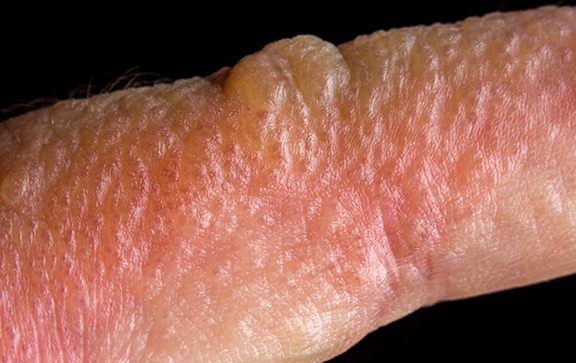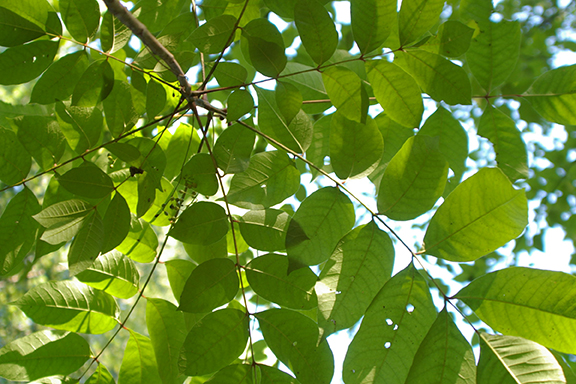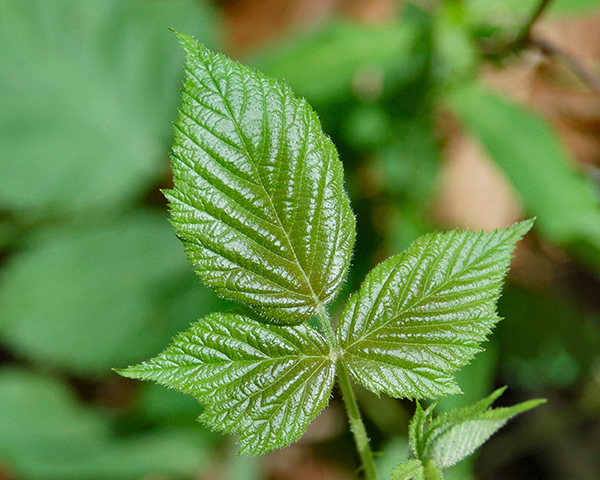Poison Ivy and other Plants that Pack a Poisonous Punch
 If you enjoy the outdoors once the weather warms up in the spring and summer, chances are you will be exposed to plants that pack a poisonous punch. In fact, day hiking trips and jaunts to your favorite swimming hole can often leave you exposed to many poisonous plants such as poison ivy, poison oak or poison sumac. Rendering to Medicine Net, these plants contain urushiol which is an oil comprised of various toxic compounds that can cause an allergic reaction. What is more, all parts of plants that contain urushiol are poisonous such as the leaves, stems and even the roots. In fact, if you have contact with the smoke from a burning plant is can cause an adverse reaction in the lungs. As well, the urushiol in plants is active up to 5 years and can infect clothing, pet fur, tools and other objects.
If you enjoy the outdoors once the weather warms up in the spring and summer, chances are you will be exposed to plants that pack a poisonous punch. In fact, day hiking trips and jaunts to your favorite swimming hole can often leave you exposed to many poisonous plants such as poison ivy, poison oak or poison sumac. Rendering to Medicine Net, these plants contain urushiol which is an oil comprised of various toxic compounds that can cause an allergic reaction. What is more, all parts of plants that contain urushiol are poisonous such as the leaves, stems and even the roots. In fact, if you have contact with the smoke from a burning plant is can cause an adverse reaction in the lungs. As well, the urushiol in plants is active up to 5 years and can infect clothing, pet fur, tools and other objects.
One of the best ways to avoid contact with plants that contain urushiol is being able to identify the plant. As well, it is important to know the various allergic reactions and symptoms if contact is actually made.
Poison Ivy
Poison ivy typically grows in woody areas throughout the US except Hawaii, Alaska and parts of the West coast. Depending on the region, it can grow as a small shrub or vine. As well, it vines on other plants or trees and trails along the ground. The plant itself has leaves that are reddish in spring, green in the summer and yellow, red and orange in the fall. Each glossy leaf has three leaflets with toothed of smooth edges. Additionally, there can be flowers that are greenish-white or berries that are whitish-yellow in color. In the winter the plant is easily identified by its hairy-looking roots that are attached to nearby trees.
Poison Oak
 Poison oak also has three broad leaves. However, unlike poison ivy it can have up to seven leaves. Generally, the leaves are glossy looking. Eastern poison oak is more like poison ivy, where western poison oak has leaflets that are lobed like oak trees. Poison oak can be found in the Southern and Eastern US. On the Pacific coast it grows as a long vine or a tall clump. The green leaves are typically fuzzy with lobed or toothed tips. It can also have yellow-white berries depending on the season.
Poison oak also has three broad leaves. However, unlike poison ivy it can have up to seven leaves. Generally, the leaves are glossy looking. Eastern poison oak is more like poison ivy, where western poison oak has leaflets that are lobed like oak trees. Poison oak can be found in the Southern and Eastern US. On the Pacific coast it grows as a long vine or a tall clump. The green leaves are typically fuzzy with lobed or toothed tips. It can also have yellow-white berries depending on the season.
Poison Sumac
 When compared to poison oak or poison ivy, poison sumac is a lot different. It grows as a small tree or large shrub. It is generally found in swamps or bogs in the Midwest, Northeast and parts of the Southeast. The leaves grow in cluster of seven to 13 smooth-edged leaflets. The colors of the leaves are orange in spring, green during the summer and orange, red and yellow in the fall. The flowers are a yellow-green and the loose cluster of berries is whitish-green.
When compared to poison oak or poison ivy, poison sumac is a lot different. It grows as a small tree or large shrub. It is generally found in swamps or bogs in the Midwest, Northeast and parts of the Southeast. The leaves grow in cluster of seven to 13 smooth-edged leaflets. The colors of the leaves are orange in spring, green during the summer and orange, red and yellow in the fall. The flowers are a yellow-green and the loose cluster of berries is whitish-green.
Symptoms
The symptoms of poison ivy, poison oak, and poison sumac can appear at any time. In fact, it can be just a few hours after exposure or several days once contact is made with the plants oil (urushiol). On the other hand, not everyone who is exposed to urushiol type plants is allergic. According to WebMD, about 85% of Americans have an allergic reaction to poison ivy and the lucky 15% are impervious to any reaction.
Typically, symptoms occur 24 to 72 hours after exposure. Oftentimes, there are red lines in the skin where you may have brushed up against the plant. Although scratching does not make it spread it can extend the healing process and can actually cause secondary infection. A well, the rash is not contagious. The symptoms may last up to two weeks and can include:
- A rash
- Itching
- Swelling
- Patches or red streaks
- A burning sensation or inflammation
- Weeping blisters that leak fluid and later crust over
When to Contact a Specialist
Besides avoiding contact with these noxious plants, you can sometimes prevent an allergic reaction by taking a cool or cold shower immediately after a hike in the woods. However, sometimes you can have an allergic reaction regardless of numerous precautions. Contact a specialist if you have any of the following symptoms:
- Difficulty breathing
- Rash is severe and extensive
- Rash persists more than two weeks
- Itching worsens and keeps you awake
- You have a temperature the exceeds 100° F<
- There is tenderness, soft yellow scabs or pus
- The rash has spread to your eyes, genital area or mouth
Georgia Dermatology Center
Georgia Dermatology Center offers a remarkable medical staff with many years of combined experience. For example, Alexander Gross, M.D. has extensive experience in the field of medicine. He has received numerous awards and honors such as the Continuing Education Award (1992, 1995, 1998, 2001, 2004, 2015), Presidential Citation (2013), the Advocate of the Year Award (2015) and many others.
The Georgia Dermatology Center is located north of Atlanta in Cumming, GA and serves patients from Gainesville, Roswell, Milton, Alpharetta, Sandy Springs and Suwanee. The highly trained staff can answer any questions regarding allergic reactions to urushiol plants.
Note: This article is not meant to act as a substitute for professional medical advice. If you have any questions or concerns about allergic reactions to urushiol plants, set an appointment with Alexander Gross, M.D. at the Georgia Dermatology Center.
© 2018 Georgia Dermatology Center. All rights reserved.













